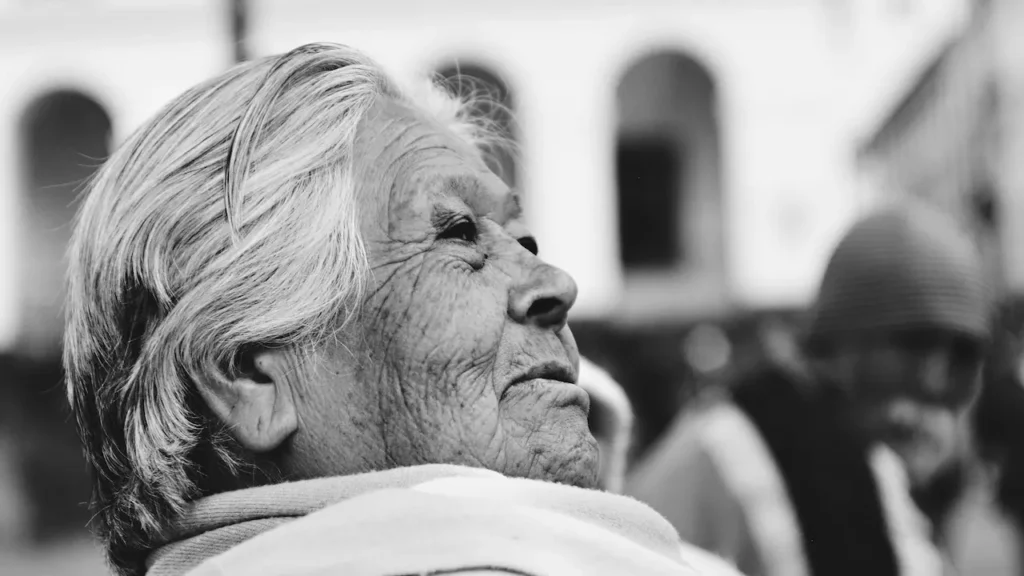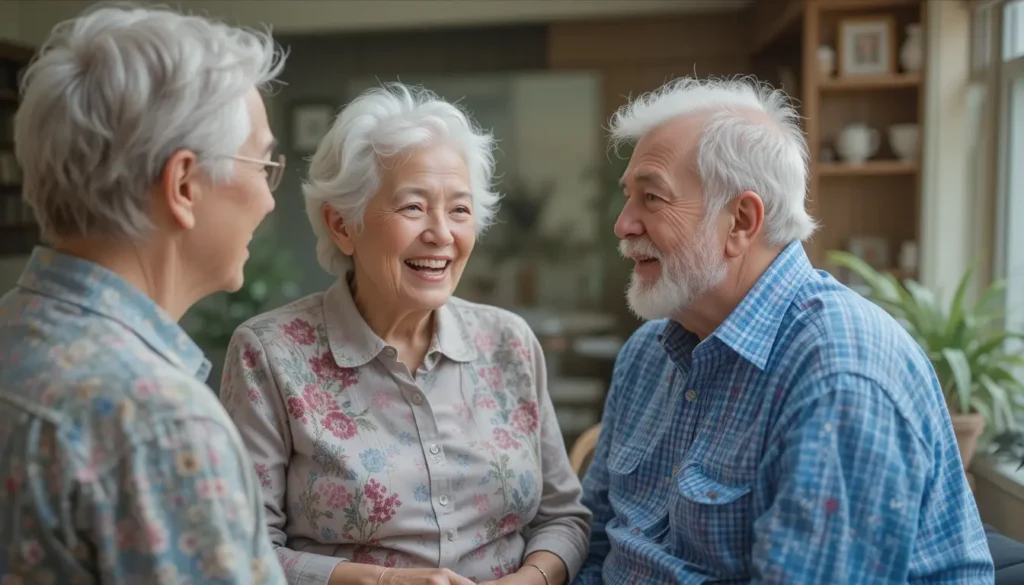The concept of “older adulthood” is both a societal construct and a scientifically studied phenomenon. The age range varies depending on context, culture, and research frameworks. Defining the age range of older adults involves categorizing stages of aging and considering biological, psychological, and social factors.
Below, we’ll explore the commonly accepted age categories for older adults, as well as alternative scientific perspectives that refine our understanding of this life stage.
Traditional Categorization of Older Adults by Age Range
Young-Old (Ages 65–74)
Often dubbed the “third age,” this phase marks the entry into older adulthood. This typically aligns with retirement in many industrialized nations. In USA, the Social Security full retirement age is 67. The young-old are generally characterized by vitality and independence, with many pursuing hobbies, and travel.
Chronic conditions like hypertension (affecting 60% of those over 65, per the CDC) or early-stage arthritis may emerge in young adulthood. But severe disability remains rare. Cognitive health is often robust.
Social networks remain broad. 73% of U.S. adults aged 65–74 use the internet as per Pew Research, 2023.
With workforce participation rising—13% of U.S. adults over 65 worked in 2024, up from 11% a decade ago (Bureau of Labor Statistics).
This group challenges the “retirement-only” stereotype. Lifestyle factors like diet and exercise heavily influence their aging trajectory.
Middle-Old (Ages 75–84)
This stage reflects a deeper entrenchment into older adulthood. Here, aging signs become more visible. Independence persists for many, but support systems play a larger role.
The prevalence of multiple chronic conditions rises. About 80% of those over 75 have at least two chronic diseases. Mobility issues, like difficulty walking a quarter-mile, affect roughly 25%. Cognitive decline, including mild cognitive impairment, impacts 10–20%, though dementia remains less common until later.
Social circles shrink due to peers’ health declines and mortality. In this phase, technology like video calls helps maintain ties. Loneliness becomes a notable risk, with 30% of this group reporting isolation according to AARP, 2024.
Advances in geriatric medicine, like hip replacements or telehealth, extend quality of life. Many in this group volunteer—20% in the U.S. This reflects a desire to stay engaged.
Old-Old (Ages 85+)
Known as the “oldest-old,” this group embodies the upper limits of human longevity. Frailty and dependency increase, yet resilience persists in some, defying stereotypes of universal decline.
Over 50% experience significant physical limitations. They even face difficulty with daily activities like bathing. Dementia affects 30–40% according to Alzheimer’s Association. Sensory impairments—90% have hearing loss, 60% vision issues—complicate daily life.
Social isolation peaks in this stage. Around 15% of US older old lives in care facilities. Family becomes the primary support, though “aging orphans” (those without kin) face unique challenges. Technology adoption drops—only 45% use smartphones—but voice-activated devices gain traction.
Life expectancy at 85 is surprisingly robust: an 85-year-old American in 2025 can expect 6–7 more years. The rise of centenarians (100+) and supercentenarians (110+) challenges traditional categories, suggesting a new “extreme-old” tier.
Japan, with 90,000 centenarians in 2024 leads globally, tied to diet and healthcare. Supercentenarians, though rare (fewer than 1,000 verified), often share genetic traits like enhanced DNA repair.
Scientific Frameworks for Understanding Aging
While chronological age provides a straightforward way to classify older adults, scientists recognize that biological, psychological, and functional factors play significant roles in determining how “old” someone truly feels. Here are some alternative approaches to understanding aging:
Biological Age of Older Adults
Biological age refers to the condition of an individual’s body systems compared to their actual chronological age. This measures cellular wear-and-tear, diverging from birth years.
For example, two 70-year-olds might have vastly different levels of physical fitness, immune function, and cellular health. A 2023 Nature Aging study found that lifestyle factors like exercise, sleep, smoking cessation can slow biological aging by up to 15 years. Conversely, chronic stress or poor diet accelerates it, meaning a 65-year-old smoker might biologically mirror an 80-year-old.
Biomarkers like telomere length, inflammation markers, and metabolic rate help estimate biological age.
This approach emphasizes that aging is not uniform and depends heavily on genetics, lifestyle, and environmental influences. Shorter telomeres are associated with accelerated aging and increased risk of age-related diseases.
Chronic low-grade inflammation is linked to various age-related conditions. Slower metabolism indicates reduced energy expenditure and potential weight gain.
Functional Age of Older Adults
Functional age assesses an individual’s ability to perform daily activities independently. The WHO’s “healthy aging” framework prioritizes what people can do—mobility, cognition, social participation—over how old they are.
Its Intrinsic Capacity model tracks five domains: locomotion, sensory, vitality, cognition, and psychology.
Someone in their late 60s with excellent physical and mental capabilities could functionally resemble someone decades younger, while another person in their early 70s with severe limitations might align more closely with the oldest-old category.
Policies now focus on “age-friendly” environments—accessible transit, community centers—rather than age-based eligibility. This shifts the narrative from decline to capability, with tools like wearable tech monitoring function in real-time.
Psychological Age of Older Adults
Psychological age reflects how old someone feels rather than how old they are. Research shows that subjective perceptions of aging influence health outcomes and longevity. People who view themselves as younger than their chronological age tend to adopt healthier habits, experience less stress, and report higher life satisfaction.
A 2024 Psychology and Aging study showed that adults over 65 feeling “younger” had 20% lower mortality rates over a decade. Socially, retirement in the U.S. (average age 64) or Japan (70) varies, as does grandparenting onset.
Many factors influence psychological aging. Positive mindset toward aging promotes better mental and physical health. Trauma, adversity, and fulfillment in earlier life stages shape one’s perception of aging. Societal expectations about aging affect how individuals perceive themselves.
Social Age of Older Adults
Social age examines an individual’s role within society and their engagement with others. For instance, a retiree actively involved in community service or mentoring younger generations might feel socially vibrant despite being chronologically older.
Conversely, someone isolated from social networks perceive themselves as “older” regardless of their actual age.
Life expectancy shapes perceptions differ country to country. Someone in 84 seems old in Japan while someone in 54 year is considered old in Sierra Leone. In developing nations, “older adulthood” starts at 50 due to harsher conditions.
Wealthier nations delay aging milestones with better healthcare; poorer regions see earlier decline, widening global gaps.
Mediterranean reverence for elders contrasts with East Asian filial piety or Western individualism, influencing when “old age” begins socially.
Why These Distinctions Matter
Understanding the nuances of aging goes beyond semantics. It has practical implications for policy-making, healthcare delivery, and personal well-being:

Healthcare Planning: Tailoring interventions to specific subgroups of older adults ensures better outcomes.Targeting the young-old can delay the onset of chronic diseases through regular screenings, vaccinations, and lifestyle modifications. Focusing on the middle-old and old-old requires specialized training for healthcare providers in geriatrics, palliative care, and end-of-life planning.
Workforce Policies: As retirement ages shift upward globally, recognizing functional and psychological age helps employers create inclusive workplaces that accommodate diverse needs. Flexible work arrangements, ergonomic adjustments, and lifelong learning opportunities enable older workers to contribute meaningfully without compromising their health.
Research Priorities: Studying biological and functional aging opens doors to innovative treatments, such as anti-aging therapies and regenerative medicine. These studies help extend healthy lifespans. Additionally, interdisciplinary research combining biology, psychology, sociology, and technology offers new insights into optimizing quality of life for older adults.
Quality of Life: Encouraging positive attitudes toward aging fosters resilience and empowers individuals to thrive at every stage of life. Promoting intergenerational solidarity, combating ageism, and providing accessible resources enhance overall well-being for both current and future generations of older adults.
Cultural Perspectives on Aging
It’s worth noting that cultural norms also shape perceptions of older adulthood. In some societies, elders are revered as sources of wisdom and authority, while in others, youth-centric values dominate. These attitudes influence everything from intergenerational relationships to public policies aimed at supporting seniors.
In many Asian cultures, particularly Confucian-influenced societies like China, Korea, and Vietnam, filial piety—the respect and care owed to parents and ancestors—is deeply ingrained. Elders hold esteemed positions within families and communities, often serving as custodians of tradition and moral guidance.
In Japan, the annual Respect for the Aged Day celebrates centenarians and honors all elderly citizens. Government initiatives prioritize eldercare. They provide robotic assistance and senior-friendly urban design.
In India and Bangladesh, Joint family systems ensure that grandparents play central roles in raising grandchildren. This fosters multigenerational bonds.
In contrast, Western societies emphasize individualism, autonomy, and productivity. While there is growing recognition of the value older adults bring, ageism remains a pervasive issue. Efforts to combat stereotypes and promote active aging are gaining traction, as populations age rapidly.
In United States, programs like Senior Corps and Experience Corps engage older adults in volunteerism and mentorship. This leverages their skills and experiences.
European countries like Sweden and Germany invest heavily in universal healthcare and pension systems. These initiatives ensure financial security and access to services for older adults.
Many indigenous cultures around the world revere elders as keepers of knowledge, spirituality, and cultural heritage. Their wisdom is passed down orally through storytelling, rituals, and ceremonies.
The elders in native American tribes serve as spiritual leaders and advisors. They guide tribal councils and preserves ancestral customs.
In Maori culture in New Zealand, Kaumatua (elders) play pivotal roles in decision-making, conflict resolution, and maintaining cultural identity.
Future Directions in Aging Research and Policy
As global demographics shift toward an increasingly aged population, addressing the needs of older adults becomes paramount. Key areas for future exploration include:
Technology and Innovation: Advances in artificial intelligence, robotics, and biotechnology hold immense promise for enhancing the lives of older adults. Smart homes equipped with sensors monitor safety and health, telemedicine expands access to healthcare, and wearable devices track vital signs in real-time.
Urban Design and Accessibility: Creating age-friendly cities involves designing infrastructure that accommodates mobility aids, reduces barriers to public transportation, and fosters walkable neighborhoods. Green spaces, recreational facilities, and inclusive housing options further support active aging.
Lifelong Learning and Cognitive Stimulation: Promoting continuous education and intellectual engagement helps preserve cognitive function and fosters a sense of purpose. Online courses, book clubs, and creative workshops cater to diverse interests and abilities.
Addressing Health Disparities: Socioeconomic status, race, ethnicity, and geographic location significantly impact aging trajectories. Closing gaps in healthcare access, nutrition, and social support ensures equitable opportunities for all older adults to age gracefully and with dignity.
Defining the age range of older adults involves much more than simply counting birthdays. By considering traditional categories alongside scientific frameworks, we gain a more holistic understanding of what it means to grow older.
Whether you’re a policymaker designing senior-friendly infrastructure, a researcher exploring the mysteries of aging, or an individual navigating your own journey through life, embracing these multifaceted perspectives enriches our collective appreciation for the diversity and complexity of older adulthood.




